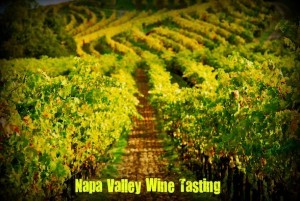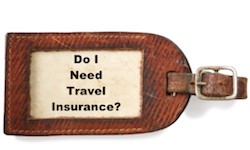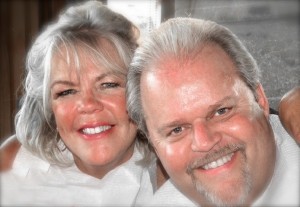Napa Valley Wine Tasting Guide
 We’ve said it before, and we’ll say it again: baby boomer travelers love wine tasting.
We’ve said it before, and we’ll say it again: baby boomer travelers love wine tasting.
In fact, according to the American Association of Wineries, an estimated 27 million winery visits currently take place annually, and the US Wine Market Council states that Americans consumed a per capita 3.04 gallons of wine in 2010.
That’s a lot of vino!
The Napa Valley stretches approximately 35 miles (56 km) in a northwesterly direction; its width varies from approximately 5 miles (8 km) wide at its widest point near the City of Napa in the south to approximately one mile wide near the northern-most town of Calistoga.
There are five unique tourism regions within the County that contribute to the total experience that makes The Napa Valley the premier wine, food, arts, and wellness destination. As if clustered along a grapevine, from north to south, Calistoga, St. Helena, Rutherford, Oakville, Yountville, the city of Napa, Lake Berryessa, and American Canyon each have their own personalities and miles of nature preserves that invite exploration and enjoyment.
Fun Facts From Napa Valley Vintners
- One barrel of wine equals roughly 20 cases, which equals 1200 glasses.
- A ton of grapes makes about 720 bottles of wine, or 60 cases.
- One vine annually produces between four and six bottles of wine, or between 20 and 30 glasses.
- Each bottle of wine contains about 2.8 pounds of grapes; therefore each 5-ounce glass of wine contains a little over half a pound of grapes.
- There are between 15 and 45 clusters of grapes per vine.
- One acre of land is home to between 900 and 1,300 vines.
Establishing the first local homestead in what is now Yountville in 1836, George Calvert Yount was the first to plant vineyards in the valley. The valley has weathered some difficult times in its relatively short history. The Valley’s once-famed Silverado Mine was exhausted in 1875 after just three years of operation. In 1893 an outbreak of phylloxera, a serious grapevine disease, crippled many of the Valley’s 140 wineries. And, prohibition, enacted in 1920, dealt the final blow to the early wine industry. Today, however, there are more than 400 wineries, 95% of them family-owned, producing some of the world’s finest wines.
Note: if you can’t see the video, click here.
Napa Valley Wine Tasting Tips
- Because of the region’s fairly large geographical area which boasts more than 400 wineries, it is best to sample Napa Valley in small pieces and save some of the area for another visit.
- Plan to spend a minimum of 90-minutes exploring each winery.
- With the distances to be driven between wineries, and the likelihood that alcohol will be consumed, we strongly recommend that you consider visiting no more than 3-5 wineries each day.
- Rather than driving yourself, we strongly recommend the services of a local wine tour company. This way, you won’t find yourself pulled over by one of Napa Valley’s finest asking you to blow into a breathalyzer.
- Not all of Napa Valley’s 400 wineries are open for tasting. Here is a printable map to help you find which wineries offer open tasting, and which wineries require an appointment for tasting.
- Some wineries offer open tours, some offer tours by-appointment.
- You should expect to pay a fee for wine tasting, however, some will offer complimentary tasting with a purchase of wine.
- Barrel tasting is becoming popular. Here are Napa Valley wineries that offer barrel tasting.
For this trip to Napa Valley, we confined ourselves to the lower half of the valley. Here are the wineries we sampled and enjoyed during our two days of Napa Valley Wine Tasting:
Silver Oak Cellars
Long a favorite of The Roaming Boomers®, Silver Oak Cellars has been producing fantastic Napa Valley and Alexander Valley Cabernets for over 40 years. One of the reasons for their stellar reputation is that they age their wines longer than most and only use American Oak barrels.
Note: if you can’t see the video, click here.
Quintessa Winery
Biodynamic farming and gravity-fed harvesting, rather than crushing, make for a unique method of wine-making. Quintessa Winery is one of our perennial favorites and is always on our list of winery visits.
Note: if you can’t see the video, click here.
Artesa Winery
Owned by the Raventos family of Spain, whose winemaking history dates to the mid-sixteenth century, the winery takes its name from the Catalan word for “handcrafted.” Today, Artesa Winery focuses on producing small, ultra-premium lots of the varietals for which the Carneros and the Napa Valley are best known – Chardonnay, Pinot Noir, Merlot and Cabernet Sauvignon.
Note: if you can’t see the video, click here.
Andretti Winery
Founded in 1996 by Mario Andretti and his longtime friend, Joe Antonini, former Chairman & CEO of Kmart Coporation, Andretti Winery is dedicated to celebrating the Italian lifestyle, complete with the finest wines produced anywhere in the world.
Note: if you can’t see the video, click here.
Black Stallion Winery
Located on the grounds of a historic equestrian center, Black Stallion Winery is the latest addition to the distinguished collection of wineries in the Oak Knoll District of Napa Valley. We had our very first barrel tasting here. Big fun!
Note: if you can’t see the video, click here.
Domaine Chandon
In 1973, Domaine Chandon became the first French-owned sparkling wine venture in the United States. But Chandon’s beginnings date back to 1690 with the father of champagne. A Benedictine monk and cellar-master at the Abbey of Hautvillers, named Dom Pérignon, set out to unlock the secret of sparkling wine and ultimately developed the traditional champagne method.
Our schedule didn’t allow us time to shoot a video at Domaine Chandon, but we loved our visit nonetheless. Here’s a beautiful photograph I captured of the three sparkling wines we sampled. YUM!
Napa Valley Wine Tasting Tours
You should know that driving in Napa Valley can sometimes be an exasperating experience. If you look at a Napa Valley road map, it resembles a ladder. There are essentially two roads traversing Napa Valley (north and south) with short diagonal roads occurring as you step up or down the valley.
 With thousands of folks visiting Napa Valley every day, this can create a slow moving string of traffic on the roads. This is particularly true when the tasting rooms start to close down for the day. We have seen strings of slow moving cars backed up for miles.You can avoid all of this by starting early and ending your wine-tasting day in the middle of the afternoon.
With thousands of folks visiting Napa Valley every day, this can create a slow moving string of traffic on the roads. This is particularly true when the tasting rooms start to close down for the day. We have seen strings of slow moving cars backed up for miles.You can avoid all of this by starting early and ending your wine-tasting day in the middle of the afternoon.
However, another option is to let someone else do the driving, and consider the use of a wine-tasting tour company.
For our Napa Valley wine tasting experience, we were chauffeured in a shiny black town car. No worries about locations, traffic, or drinking and driving. We used Pure Luxury Wine Tours and were very happy.
Napa Valley wine tasting tours come in all shapes and sizes. You can ride along on a bus following a regular schedule, you can hire a private driver driving an expensive vintage convertible, you can hire a private town car like we did, you can hire a stretch-limo, or I bet you could even do it on bicycle-built-for-two.
Let your imagination go wild, and find a wonderfully unique experience.
Napa Valley Wine Tasting Without the Drive
If you would like to sample Napa Valley wines with out a drive, you can do that too. Here are a few places we found where you can sample a variety of Napa Valley wines in one place:
- Backroom Wines – “Off-the-Grid” Tasting Menu changes extremely often, but it always features local, hard-to-access artisan wineries. Currently offering tasting-flights for $10. Cheese plates and other yummy snacks are also available to enjoy during your visit!
- Bounty Hunter Wine Bar & Smokin’ BBQ – 40 available wines by the glass (2 oz pours available), large variety of wine flights, and over 400 highly allocated wines on the shelves. Voted the #1 Wine Bar in the Bay Area.
- The Tasting Room at Napa Wine Company – Sample over 20 alternating wineries in one spot. Described as a launching pad for some of Napa’s most notable cult wines and celebrity winemakers.
- Vintner’s Collective – A multi-winery tasting room that is home to twenty of the most experienced and talented winemakers in the Valley.
Shipping Guide for Your Napa Valley Wine
It is important to understand that you can not bring any of your precious Napa Valley wine with you on the plane. Carry-on is not allowed.
You can, if you have just a bottle or two, packed your wine in your checked luggage. If you do this, consider sticking your wine in a sock and then roll it up in a few shirts to protect it during transit. However, in our humble opinion, shipping is a far safer and more palatable option.
Unfortunately, shipping wine is a bit of a convoluted mess! It seems that each state has its own rules regarding the shipment of wine, and you will certainly want to be aware of your state’s particular guidelines. For example, eleven states completely prohibit the shipment of wine, and the rest have limited rules regarding shipment.
A website called Free the Grapes will help you determine your state’s particular guidelines.
You will also find that some wineries, because of required permits, may not ship to your state regardless of your state’s procedures. If that’s the case, inquire about wine shipping companies who will ship the wine for you.
Well, that’s our Napa Valley Wine Tasting Guide. There’s a lot of information here to assist you in having a most delightful visit. We are certain to be back in Napa Valley in the near future where we will once again explore a piece of the valley, and you can count on us to share the experience with you when we do.
Now, I’m off to write our piece on where to stay and where to eat in Napa Valley. Enjoy!
If you enjoyed this article, come follow us on Facebook and Twitter. For exclusive travel deals, giveaways, and perks, come join our FREE Travel Rewards Club.
 The Roaming Boomers
The Roaming Boomers




